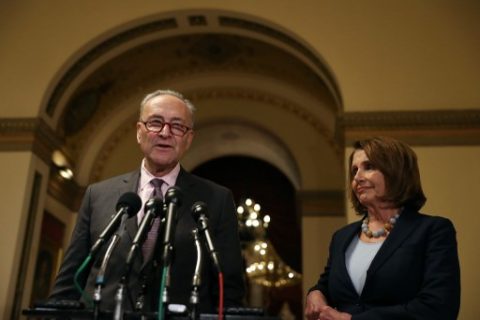

by Michael Mathes
Agence France Presse
WASHINGTON, United States (AFP) — About 14 million fewer Americans will have health insurance next year under the new Republican plan to replace Obamacare, a nonpartisan congressional analysis projected Monday, heaping pressure on President Donald Trump to make good on his pledge for broader coverage.
By 2026, that number would shoot up to 24 million, the Congressional Budget Office projected, in perhaps the most alarming revelation in its highly-anticipated report.
It also said that enacting the legislation currently before Congress — a measure backed by Trump and House Speaker Paul Ryan — would reduce the federal deficit by some $337 billion over the next decade, a relatively small savings given the massive size of the US economy.
Average health coverage premiums would rise by 15 to 20 percent in 2018 and 2019 for individual policy holders, it said.
The CBO report was being seen as a black eye for Trump’s effort to repeal and replace Obamacare, which has already faced substantial opposition from within his own party, especially over fears it would leave millions uninsured.
“Trumpcare would be a nightmare for the American people,” top Senate Democrat Chuck Schumer said, as he and House minority leader Nancy Pelosi urged House Speaker Paul Ryan to scrap the legislation.
Trump and his inner circle have insisted the plan will be a vast improvement over Barack Obama’s signature health care reform — which many in his party say caused health care coverage costs to spike.
“We disagree strenuously with the report that was put out,” Health and Human Services Secretary Tom Price said at the White House.
“The CBO looked at a portion of the plan but not the entire plan,” Price said.
He added that the current legislation under consideration is just the first part of a three-pronged plan that includes administrative action to deregulate the marketplace and later legislation that allows people to purchase insurance across state lines.
“Our plan is not about forcing people to buy expensive, one-size-fits-all coverage. It is about giving people more choices and better access to a plan they want and can afford,” Ryan said.
‘Nightmare’
The White House has spent the past week grappling with maintaining party unity in the face of opposition to the new initiative.
Some conservatives have argued that the plan is too similar to Obamacare, while moderates warn the new legislation does not provide enough funding to help millions retain or purchase coverage.
Trump campaigned for a full year on repealing and replacing Obamacare, repeatedly stating his desire to make health coverage available for everybody.
On Sunday, his administration went so far as to predict no one will suffer financially from the transition to a more free-market system.
“Nobody will be worse off financially in the process that we’re going through,” Price said on NBC’s “Meet the Press.”
Trump, facing mounting concern about the plan, met Monday with “victims of Obamacare” to highlight the Republican replacement.
Asked before the CBO report was released whether he had a message to Americans who might lose coverage, Trump urged optimism.
“If we’re allowed to do what we want to do, it will get better. Much better,” he replied.
‘Do not walk the plank’
The GOP plan rolls back the expansion of the Medicaid health care program for the poor by 2020, replaces government subsidies with tax credits to help individuals buy insurance and scraps Obamacare taxes.
It preserves two popular Obamacare provisions: the rules that insurance companies cannot refuse coverage to anyone due to a pre-existing condition, and that dependents can remain on their parents’ insurance plan until age 26.
The Affordable Care Act helped 20 million Americans gain coverage.
Under the new plan, premiums would begin decreasing by 2020, CBO said, due to grants that could bump up tax credits to poor or working-class Americans, and because younger people would be projected to sign up for coverage.
But costs by 2026 would be some 20 to 25 percent higher for people age 55 to 64, CBO said.
And by that year, roughly 19 percent of Americans under 65 would be uninsured, CBO said, compared with the 10 percent uninsured projected under current law.
Senator Tom Cotton warned that the bill as is could not pass the Senate, and called on fellow Republicans to avoid a political meltdown on health care that could cost their party in the 2018 mid-term elections.
“I would say to my friends in the House of Representatives, with whom I served: Do not walk the plank and vote for a bill that cannot pass the Senate and then have to face the consequences of that vote,” Cotton told ABC “This Week.”
© Agence France-Presse
